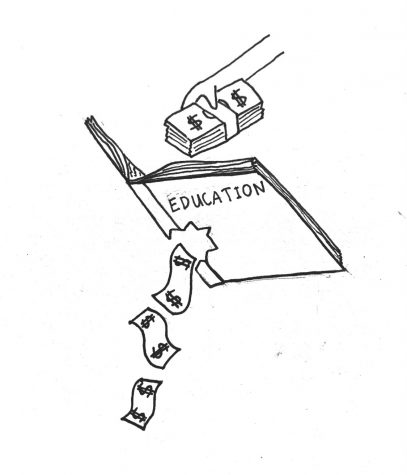California’s government is led by politicians who pride themselves on equality and allowing the hindered to thrive. However, this governing body is presently failing the very people it aims to protect, utilizing an ineffective education funding system that has backfired at the expense of the disadvantaged. Property taxes are largely blamed for education inequality as they account for a large portion of school funding, creating a great disparity in education when neighboring school districts have different income levels. However, there is another contributing factor in education disparity aside from the 22 percent of the funding that property taxes produce: the state’s funding formula.
In 2012, former Governor Jerry Brown introduced the Local Control Funding Formula (LCFF) in hopes of undercutting education disparities for students across California. This massive change in California public education allowed for local districts to receive additional state funds specifically for students deemed as educationally high risk by the state: economically disadvantaged, English learning or foster students. The LCFF seemed to be a step forward in the state funding formula, credited with taking the bureaucratic layers out of state funding. However, the LCFF has created unforeseen consequences on a district level.
Brown envisioned state funding being proportionately allocated within districts along lines of pupil needs, but the idea has unfortunately been undermined by rising expenses in California’s education system. This has increased (and continues to increase) the education inequality that was supposed to be eradicated by the LCFF. California needs to repeal the LCFF as the landscape of its public education financing has changed and immense shortfalls of the plan have become apparent.

A major hitch with the LCFF is the complicated and often hard to discern financial spending reports, officially known as Local Control Accountability Plans (LCAPs), that schools are required to disclose. Because of the decentralization of funding for students that is at the center of the LCFF, districts have the ability to use the funds to compensate for the increased deficits forced upon them as employee healthcare and pensions rise.
Education Trust Weekly, an advocate of education reform for students in poverty, found that in the 2014-2015 school year, some California school districts had planned to use LCFF funds to meet other district expenses, aside from actually spending it on services for the educationally disadvantaged groups that the program intended to help. The study also found that 43 percent of California districts only represented a third or less of their budget in their LCAP disclosures.
An Atlantic article also raised concerns about where state LCFF funding is heading, citing two lawsuits in separate districts over the misuse of state funding. The article notes a legal battle the highly acclaimed Long Beach School District is facing over the use of school funds to push forward Advanced Placement (AP) courses, on-site law enforcement and employee benefits, while neglecting the high risk students the funding is meant for. The district was accused of shorting these students 24 million dollars in the 2014-2015 school year.
This diversion of funds away from these targeted groups is not necessarily malicious, but it is enabled by the complexity and maneuverability of LCAPs.
In the case of the Long Beach School District, funding was short for high risk students because of the complexity of LCAPs. The funding plans were difficult to access, and it was therefore challenging to hold the district accountable for the misplaced dollars.
Redwood is a part of the problem; the TUHSD’s LCAP information for state funding plans is limited. The ambiguity and shrouded nature of LCAPs is what allows for schools to take advantage of the LCFF system amidst a time of budget uncertainty across California, seen in the TUHSD’s own budget struggles.
Governor Gavin Newsom projected a $54 billion deficit for California schools by June 2021, according to Ed Source, a reporter of California’s education challenges. Such a deficit will force schools to cut costs and further dig into their LCFFs for non-related funding.
A noble but flawed idea, the LCFF will soon be forced to further take away from student dollars as other district costs unrelated to creating an equitable education system rise. Though Governor Newsom’s most recent education budget pays for portions of teacher pensions, taking off some of the economic burden on districts, the deficits will likely continue to grow and worsen California’s per pupil spending, already 46th in the nation in 2017. There needs to be a monumental change in the way that California public schools are funded, emphasizing transparency and additional funding from a state level.







